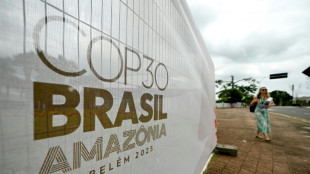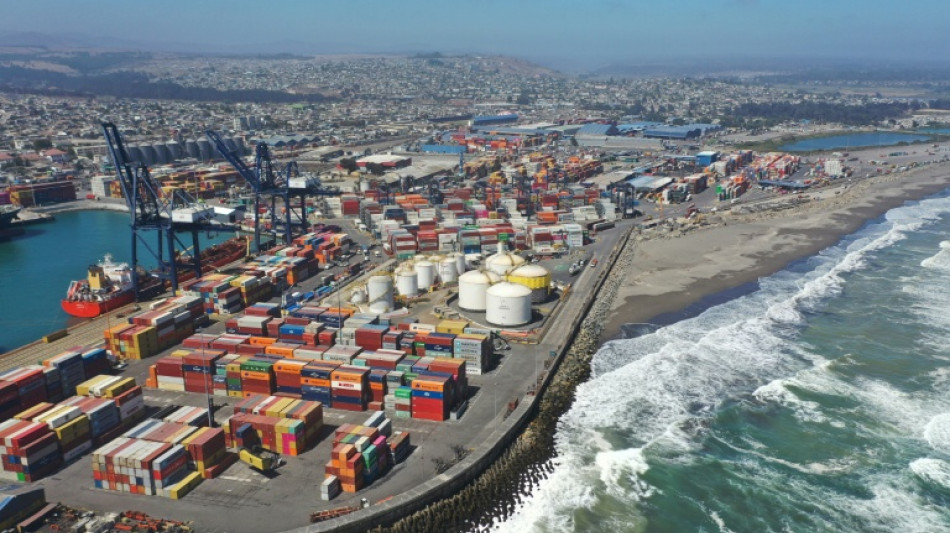
-
 Scandic Trust Group strengthens sales network with First Idea Consultant
Scandic Trust Group strengthens sales network with First Idea Consultant
-
Green shines as Suns thump Clippers 115-102

-
 Japan to screen #MeToo film months after Oscar nomination
Japan to screen #MeToo film months after Oscar nomination
-
Erasmus relishing 'brutal' France re-match on Paris return

-
 Rejuvenated Vlahovic taking the reins for Juve ahead of Turin derby
Rejuvenated Vlahovic taking the reins for Juve ahead of Turin derby
-
'Well-oiled' Leipzig humming along in Bayern's slipstream

-
 Bangladesh cricket probes sexual harassment claims
Bangladesh cricket probes sexual harassment claims
-
NFL-best Broncos edge Raiders to win seventh in a row

-
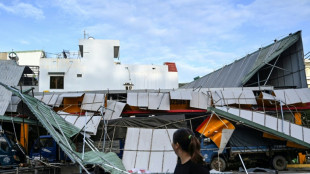 Deadly Typhoon Kalmaegi ravages Vietnam, Philippines
Deadly Typhoon Kalmaegi ravages Vietnam, Philippines
-
Three killed in new US strike on alleged drug boat, toll at 70

-
 Chinese microdrama creators turn to AI despite job loss concerns
Chinese microdrama creators turn to AI despite job loss concerns
-
Trump hails Central Asia's 'unbelievable potential' at summit

-
 Kolya, the Ukrainian teen preparing for frontline battle
Kolya, the Ukrainian teen preparing for frontline battle
-
Big leap in quest to get to bottom of climate ice mystery
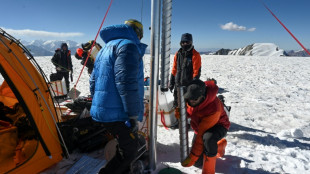
-
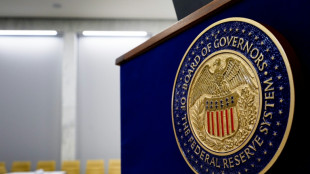 Markets drop as valuations and US jobs, rates spook investors
Markets drop as valuations and US jobs, rates spook investors
-
'Soap opera on cocaine': how vertical dramas flipped Hollywood

-
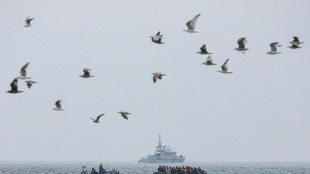 Under pressure? EU states on edge over migrant burden-sharing
Under pressure? EU states on edge over migrant burden-sharing
-
US influencers falsely associate Mamdani with extremist group

-
 Hungary's Orban to meet Trump in face of Russia oil sanctions
Hungary's Orban to meet Trump in face of Russia oil sanctions
-
US facing travel chaos as flights cut due to govt shutdown

-
 Liverpool and Man City renew rivalry as they try to narrow Arsenal gap
Liverpool and Man City renew rivalry as they try to narrow Arsenal gap
-
UK's Andrew asked to testify over Epstein as he formally loses titles

-
 Local hero: 'DC sandwich guy' found not guilty of assaulting officer with sub
Local hero: 'DC sandwich guy' found not guilty of assaulting officer with sub
-
Dead famous: Paris puts heritage graves up for grabs

-
 UK grandmother on Indonesia death row flies home
UK grandmother on Indonesia death row flies home
-
Former NFL star Brown extradited from Dubai to face trial in shooting - police

-
 How to Sell Your Small Business Fast (Guide Release)
How to Sell Your Small Business Fast (Guide Release)
-
Chile presidential hopeful vows to expel 'criminal' migrants to El Salvador

-
 Trump event paused in Oval Office when guest faints
Trump event paused in Oval Office when guest faints
-
NFL Colts add Sauce to recipe while Patriots confront Baker

-
 Home owned by Miami Heat coach Spoelstra damaged by fire
Home owned by Miami Heat coach Spoelstra damaged by fire
-
Tesla shareholders approve Musk's $1 trillion pay package

-
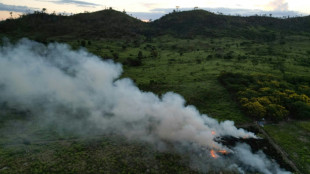 World leaders launch fund to save forests, get first $5 bn
World leaders launch fund to save forests, get first $5 bn
-
Villa edge Maccabi Tel Aviv in fraught Europa League match

-
 Protests as Villa beat Maccabi Tel Aviv under tight security
Protests as Villa beat Maccabi Tel Aviv under tight security
-
US Supreme Court backs Trump admin's passport gender policy

-
 Japan boss Jones backs Farrell to revive Ireland's fortunes
Japan boss Jones backs Farrell to revive Ireland's fortunes
-
MLB Padres name former reliever Stammen new manager

-
 'Grand Theft Auto VI' video game delayed again until Nov. 2026
'Grand Theft Auto VI' video game delayed again until Nov. 2026
-
Martino returns as head coach of MLS Atlanta United

-
 Hamilton dismisses Ferrari exit claims
Hamilton dismisses Ferrari exit claims
-
Musetti keeps ATP Finals hopes alive, joins Djokovic in Athens semis

-
 England boss Borthwick wants 'brilliant' Marcus Smith to shine against Fiji
England boss Borthwick wants 'brilliant' Marcus Smith to shine against Fiji
-
Piastri says he is confident he can recover and win drivers' title

-
 Verstappen admits he may need a bit of 'luck' to haul in rivals in title race
Verstappen admits he may need a bit of 'luck' to haul in rivals in title race
-
Kazakhstan to join Abraham Accords as Trump pushes Mideast peace

-
 'Moral failure': Leaders seek to rally world at Amazon climate talks
'Moral failure': Leaders seek to rally world at Amazon climate talks
-
UN Security Council votes to lift sanctions on Syrian president

-
 Democratic giant, trailblazer and Trump foe Nancy Pelosi to retire
Democratic giant, trailblazer and Trump foe Nancy Pelosi to retire
-
World leaders ditch ties at sweaty climate summit


Rising seas test defenses of South American ports
When waves come crashing over the sea wall in Chile's biggest port of San Antonio, dockers run for cover.
The state-run port, which handles 1.7 million containers annually, is frequently lashed by swells several meters high as rising ocean levels linked to climate change cause more frequent storm surges.
Some of the waves dwarf the wall that protects the port from where Chile ships wine and fruit to the world, ripping away 20-ton blocks of concrete defenses.
Since 2020, approximately 270 vessels each year have been either unable to dock at the port or set sail from San Antonio because of the raging seas.
San Antonio's location, in a wide bay with no natural defenses, leaves it particularly vulnerable to storm surges, said Andres Orrego, director of Chile's Portal Portuario shipping news site.
But all along South America's Pacific coast, shipping is being buffeted by rising sea levels.
With the southern hemisphere's approaching winter, when the biggest swells occur, the race is on to keep the tide at bay.
The new Chinese-built megaport at Chancay in Peru, which was inaugurated by President Xi Jinping in November, comes with a massive breakwater almost three kilometers (two miles) long.
On a recent day of calm seas at San Antonio, cranes were busy moving blocks to reinforce the sea wall and top it with curved concave blocks that break the waves' momentum as part of an $11-million climate mitigation upgrade.
Half of the wall has already been reinforced, helping reduce the number of days the port is out of action, from 47 in 2023 to 30 last year.
Over 1,300 kilometers to the north, the port of Antofagasta, which handles most of Chile's copper exports -- Chile is the world's biggest producer of the metal -- also plans to boost its storm defenses to reduce downtime.
- Major investment required -
The biggest port in the South Pacific, Callao port in Peru, is protected by a breakwater nearly 13 meters (43 feet) high.
The two nearby islands of San Lorenzo and El Fronton also act as natural coastal barriers.
And yet the port was forced to close for 10 days at the end of 2024, during storms that brought waves of up to four meters and raised concerns for worker safety.
Storm surges have also caused a slowdown in activity at Manta in Ecuador, a major tuna export hub which was forced to close for several days last year, according to the port's management.
The water swept away two barriers installed on stilts, leading the port operator to declare that "coastal protection works... and adaptation strategies... are now required."
Chilean climatologist Raul Cordero blames the "more intense and frequent storm surges" along the Pacific coast on the increase in ocean temperatures and levels.
"A lot of money will have to be invested in protection against (extreme) waves," he warned.
The port operators that spoke to AFP declined to give estimates for the revenue lost to rising seas.
But shipping companies have to pay between $80,000 and $150,000 for each extra day they remain moored in San Antonio, the port's deputy operations manager told AFP.
Jose Aldunate, who is in charge of boosting San Antonio's storm defenses, said he expects the port's new defenses to be breached by some extreme swells.
But he expressed confidence that, once the upgrade is finished in 2026, the flooding would be "within acceptable levels, so that the port can continue operating without problems."
P.Costa--AMWN

